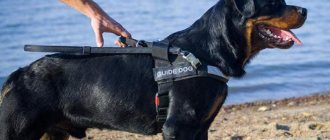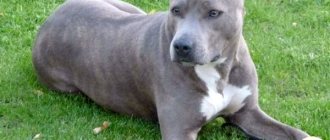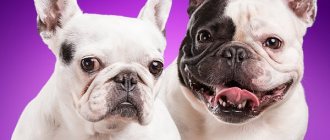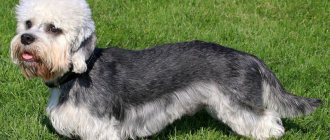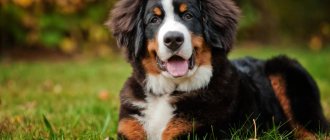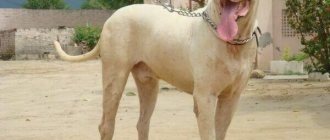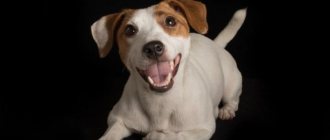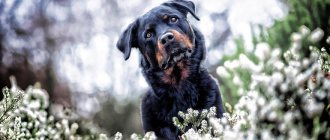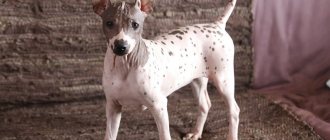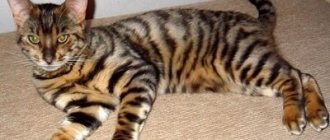These dogs are very unique, but very smart. This requires an owner with a strong-willed character in order to be able to raise the pet in strictness, never giving in to slack. If successful, the gul dong becomes a loyal and reliable friend, always ready to protect its owner.
Origin
The origin of this variety of bulldog is attributed to Pakistan, which is not far from the truth. The first mentions of gul dong at the end of the 19th century referred to the territory of this country. However, technically, the territory of modern Pakistan was considered an Indian colony, which means it makes sense to say that the origin of the dog has Indian roots.
It is difficult to find out the exact history of the origin and selection of fighting bulldogs due to the narrowness of their distribution area. Gul dong can be found in Pakistan, India, Iraq and Afghanistan. The ancestors of the Gul Dong are considered to be the Pakistani Mastiff (Bully Kuta) and the Pakistani Fighting Terrier (Gul Terrier). A number of sources mention the Dogo Argentino, the Old English Bulldog and the Bull Terrier. The selection principle was characterized by four main cherished qualities: power, speed, agility and aggressiveness. The breed has not received recognition from cynological associations around the world.
By
Dogo Argentino
Officially, they are still the only breed whose homeland is Argentina, which is why they are often called Dogo Argentino.
It was bred in the 20s of the last century, and ten breeds were involved in the breeding work.
The Dogo Argentino is a purely hunting dog, capable of poisoning quite large predators, but there have been recorded cases of its victories in battles with purely fighting breeds.
By the way, there is a very interesting article on the site about the most popular breeds.
Dimensions, appearance
Cynological associations do not recognize the existence of such a breed as the guldog. Therefore, there is no point in talking about breed standards. The selection of individuals for mating is carried out according to the same four parameters: power, speed, agility, aggressiveness.
An adult male reaches 70-80 cm at the withers, a female's height is 60-70 cm. The tallest recorded height of a ghoul dog is 116 cm. The weight of an adult dog ranges from 35 to 60 kg. Sources call the specimen weighing more than 95 kg the most massive dog of the breed. The body structure of females and males does not differ significantly.
Body structure
The body is proportional with pronounced muscles.
Powerful long neck, large head, sometimes seeming disproportionately large in relation to the body.
The Pakistani has a long tail, which is docked for puppies intended for fighting. Even the undocked tail of the Gul Dong does not rise high.
The coat is short and harsh. The color is varied (white, black, red, gray, solid, with stripes or spots). The most popular dogs are those with light coats. The short, hard coat lies closely to the skin.
The paws are long, powerful, without curvature.
Rhodesian Ridgeback
The breed was bred in Zimbabwe and was intended for hunting lions; it is no coincidence that its second name is “lion dog.” It was specially crossed with wild individuals to improve hunting qualities. By nature, dogs are smart, intelligent, brave and loyal.
They cannot stand loneliness, they are not friendly towards strangers, but they are not aggressive either. Rude towards small children. Training should be positive; this is the only way the owner will be sure that he will get an intelligent, well-mannered and socially adapted dog.
Bull Terrier - a child of a harsh era
There are many legends around dogs of this breed, which was bred in England in the mid-19th century, the reason for which was the aggressiveness of the dogs.
The negative attitude towards the breed among the population was formed, first of all, thanks to newspaper reports and news releases. But in fact, in the past there are times when some representatives of bull terriers took part in dog fights, tearing up hundreds of rats for the amusement of the public.
The modern representative of this once fighting breed is a good protector and a reliable bodyguard. The main thing is to raise him correctly.
Indian Mastiff (Tibetan Mastiff, Tibetan Molosser)
This is a very ancient breed of dogs; they are powerful and strong specimens, capable of withstanding a serious opponent and surviving in rather difficult environmental conditions.
The power and strength of these animals has become a household word. They can become wonderful companions and comrades, but if you want to have them as pets, take into account their personality and physique. Indian Mastiffs are quite demanding animals. They should be given a lot of attention; they require appropriate living conditions - a lot of free space.
Also remember that most representatives of this breed will decide for you who is your friend and who is your enemy, and while protecting you and your property, they are capable of reacting aggressively even to your friends.
Character traits
The Pakistani bulldog is distinguished not only by its intelligence, cunning, stubbornness, but also by its devotion to its owner and his family. This fact does not diminish the danger of the breed to others. Gul dogs are dominant dogs with increased aggressiveness that require specific training by an experienced dog handler.
As soon as the owner of the Pakistani dog gives up the dominant position of the “leader of the pack” a little, the dog will not hesitate to show aggression and attack the “weakened leader.” The appearance of a stranger on the territory of the gul dong, noise, bustle, other animals and any other irritants will provoke an immediate attack.
Pakistanis are not adapted to urban conditions and living in an apartment. Temperamental dogs are constantly looking for a point of application of boiling energy, because, deprived of fighting practices, they remain excellent watchmen and security guards. Gul dong is suitable for keeping in an enclosure in a village or small settlement with a large local area. In any case, representatives of the breed need to exercise a lot during the day. Walking a gul donga is not a leisurely walk, but a jog at a good pace or a bicycle cross.
What is the character of gul dongs?
Even a trained dog will still be aggressive. She seems to be in constant tension and perceives everyone around her as potential enemies. It will never completely obey its owner - as soon as the dog feels that the person is losing control over it, an attack can be expected at any moment.
Even at home you need to keep your gul dong on a leash and only take it out in public wearing a muzzle.
The owner’s task is to always be ready to repel the attack of an angry dog. Leaving a dog alone without control with other people (whom the animal does not consider as owners), and especially with children, is deadly for the latter. Gul Dong takes all animals (even his fellow tribesmen) with hostility and seeks to attack.
There is a huge risk in letting children approach the gul dong like this - the dog can tear the kids apart in a couple of minutes
Is the dog trainable?
A person manages to train tigers and bears, of course, he can train a gul dong. But this should be done by those who are professionals in matters of training. If you have never had experience with fighting animals, then getting a Pakistani Bulldog right away is dangerous, as it is one of the most uncontrollable and aggressive dogs.
When raising this dog, you cannot make concessions or show weakness. This can result in complete disobedience of the gul dong and, as a result, end in tragedy for the person.
The dog is definitely not suitable for keeping in a house or apartment. She needs to be kept in an enclosure in the yard, separately from other dogs (otherwise the strongest will tear the weakest apart, as soon as the owner turns away). You need to exercise your dog every day. Training should be aimed at instilling unquestioning obedience. For example, during a walk, the dog should always be one step behind the owner, not next to or in front. Thus, a social hierarchy is formed, the dog understands that the person is in charge.
Gul dongs are smart, they understand commands well, but due to their stubbornness and mistrust they are reluctant to carry out human orders
The Ghoul Dong needs to be socialized from puppyhood. If the dog is completely isolated, then his level of aggression will be maximum. The animal must constantly see people, although it is not at all necessary for strangers to touch the dog. Proper upbringing and socialization can reduce the level of natural aggressiveness and make the dog more obedient (although it will still not stop being dangerous, the owner must constantly remember this).
English Mastiff: the largest on earth
This is the largest dog breed on the planet. Their ancestors made a glorious fighting career. Clad in armor, they fought in the war dog squads of the armies of Alexander the Great and Julius Caesar, and fought to the death in gladiator fights. It is believed that they originate from Tibetan mastiffs. These giant dogs need a steady hand. The owner’s job is to educate and train. Mastiffs are easy to train. They make excellent bodyguards, companions, and watchmen. These kind dogs treat their owners with love, are obedient and flexible, and will never bark for no reason.
Spanish Alano (Spanish Bulldog)
An ancient Spanish breed of dog, popular in its country. She has a stable psyche and a powerful grip and that is why she was often used in dog fights.
Alano is quite unpretentious, has a good reaction, and is also very dexterous and flexible. The wounds on it heal quite quickly. Such a dog can only be kept on the street; it is not intended for apartment conditions. She has an overly active nature and can be aggressive in a confined space.
Alano Espanyol: a dog with roots from antiquity
The Book of the Hunt (1311-1350) contains the first mention of Spanish bulldogs. Simultaneously with the Alan tribes that invaded the Pirnaia in the 4th century, dogs with a short, wrinkled muzzle arrived here. They became extremely in demand in pacifying restive bulls participating in bullfights, in protecting their master's property, and even hunting Indians. Later, by the end of the 19th century, with the ban on the participation of dogs in “pacification”, Alanos were not so popular. And already by 1939. it was believed that the breed had completely disappeared.
Cordoba fighting dog
This breed was bred artificially by crossing dogs of various fighting breeds. Accordingly, we got what was expected - a strong, powerful and practically invincible dog for fights with other animals.
Naturally, this breed is not suitable for living in normal home conditions. Most individuals of this breed are poorly controlled animals with clearly disturbed psyches. From early childhood they are raised exclusively for fighting, and the most viable and ferocious individuals are selected.
This breed was bred through long crossings to obtain the best fighting characteristics. And they turned out to be so good that the breed was simply doomed to extinction - they could not interbreed, obsessed with only one goal - killing potential partners.
Maintenance and care
Gul dongs are unpretentious in maintenance and require only a minimum of sanitary procedures. It is necessary to wash the dog completely no more than 1-2 times a year. Short hair does not need a hair dryer; exposure to a stream of warm air can even cause drying of the skin.
Grooming involves combing with a thick rubberized glove in the direction of hair growth up to 2 times a week.
Cleaning the eyes with a cotton pad soaked in warm water is done as needed.
Once a week it is necessary to treat the ears of a Pakistani bulldog with a cotton pad soaked in hydrogen peroxide.
Claws should be trimmed with special pliers once every two weeks to a month.
Cleaning with a special fingertip and toothpaste every 3 days will help prevent problems with teeth and the appearance of plaque.
Characteristic
- Fighting, hunting dog.
- Height ranges from 65 centimeters to 100.
- Weight from 50 to 60 kilograms.
- The coat is short.
- Color varies; black, gray, brown, often with white or black stripes or specks. The most common color is white with various inclusions.
- The head is large and massive.
- Wide forehead, short muzzle.
- Large skeleton with a deep chest and a long, tapering tail.
- Large massive paws.
- Small dark eyes.
- Drop ears, sometimes cropped.
Nutrition
Keeping a Gul Dong dog is not cheap. The powerful muscular frame of the Pakistani needs constant replenishment with protein. When purchasing a dog, you need to make a choice in favor of natural food or dry food, and not mix these food lines in the future.
Natural food
The Pakistani Bulldog eats about 3 kg of meat during the day. The basis of the diet is:
- Lean meat and fish;
- Giblets;
- Broths based on meat and fish, soups based on them;
- Porridge to provide the body with fiber;
- Fermented milk products: cottage cheese, kefir, yogurt;
- Fresh vegetables to maintain vitamin balance.
Dogs are prohibited:
- Fat meat;
- Bones;
- Bread products;
- Legumes, corn, onions, potatoes;
- Sweet, salty, sour, bitter, pickled, fried, smoked food.
Dry food
Dry food should satisfy the Pakistani Bulldog's body's need for proteins and vitamins. Gul dong needs a quality product. The daily amount of food should be selected based on the needs and age of the dog, as well as the composition of the food.
Regardless of the type of food, a Pakistani needs constant access to plenty of drinking water and periodic use of vitamin complexes.
Diet for an adult dog (from six months): 1-2 times a day. Malnutrition is most pronounced in the lower ribs. If the lower costal arches begin to bulge, the dog needs to increase the amount of food.
Training and education
Trainers are able to teach commands to such dangerous predators as tigers, lions, and pumas. Therefore, it cannot be said that the Pakistani Bulldog is completely uncontrollable and cannot be trained. It is important to become a leader for the animal, and also to know the subtleties of character and the rules of handling it.
Gul Dong is smart and quick-witted. He likes to make decisions on his own, so training and raising a wayward dog is not easy. If you have no experience in handling fighting dogs with a high level of aggression, do not even think about starting to train a Pakistani dog on your own.
Only an experienced dog handler who knows the methods of raising and training such animals can cope with it.
There are a number of rules and recommendations, some of which are outlined below:
- Education begins from the first months of life and never stops.
- Classes and training are required daily. Close, constant contact between the owner and the Pakistani is important.
- When walking, do not allow the dong to walk ahead of you; he should walk slightly behind.
The main direction of training a Pakistani bulldog is unquestioning obedience!
Interesting Facts
- The Pakistani Bulldog breed is not recognized by any canine federation.
- Breeding individuals of this species are selected according to the principle “the more aggressive, the more powerful, the better.”
- An adult gul dong eats at least 3 kg per day. meat. At home they are fed exclusively raw meat.
- The Pakistani Bulldog perceives everyone around them as potential enemies.
- The Pakistani is one of the most vicious and uncontrollable dogs.
Health
Due to its vicious nature, this breed is often used as a fighting dog. Then her ears and tail are cropped. Due to heavy physical exertion, such animals do not live longer than 7 years.
If the dog lives on the street, you should carefully ensure that the box is dry, with tightly fitted boards. They do not tolerate drafts well. Most often this ends in otitis media for them. Accustomed to high temperatures. But frosty winters are bad for them due to their short fur.
Very rarely they have genetic abnormalities. Anomalies in skeletal development are associated with a poorly selected diet and lack of nutrients.
The problem for these dogs is the appearance of tartar and unpleasant odor from the mouth. To avoid this, teach your puppy to brush his teeth once every two to three days from the age of two months. Then, having matured, he will perceive this procedure calmly. In addition, toys are needed that will help get rid of tartar.
Alabai
The Central Asian Shepherd Dog, which in Turkmenistan is called a wolfhound, is of colossal size. Fearless, strong dogs are excellent guards and are capable of developing enormous speed even over short distances. They have a strong, stubborn character and are naturally prone to aggression, which they can take out on their owner.
Loyal individuals are not allowed for breeding, since it is believed that a dog that is not able to give a worthy rebuff to the enemy cannot be called a wolfhound. It is not recommended to put Alabai on a chain; he should move freely around the spacious enclosure.
Breeding and cost
As was written above, dog handlers do not recognize the Gul Dong breed, therefore, it is impossible to get a puppy or an adult dog in an official kennel, since such establishments, registered in full form, simply do not exist in nature. This is not a surprising fact, given that in many countries the breeding of such fighting dogs is prohibited.
Breed standards and breeding of dogs are carried out in their historical homeland - Pakistan and India. Distinguishing a Pakistani puppy from a Dogo Argentino or Bully Cutt puppy is a task for a professional. As a rule, when making such a choice, reference is made to the structure of the paws and the power of the bite.
Pros and cons of the breed
Despite many negative reviews and characteristics, gul dong, with proper upbringing and treatment, can become a faithful partner and an excellent guard for a strong man.
The Gul Dong, like any other breed, has not only disadvantages, but also advantages. The main pros and cons are outlined below.
Advantages:
1. Ideal security and guard qualities. 2. Innate hunting instinct. 3. Easy care. 4. Intelligence and intelligence. 5. Strength, endurance.
Learning ability
Gul-dong is a difficult animal to train. For good adaptation and if you want to have him in a city apartment, you need to train him from a young age. Only a few people get such a dog; not all experienced dog handlers agree to have a time bomb at their side. In order for the class to go perfectly, it is worth letting the puppy know who is in charge. Otherwise, he will become not a companion and subordinate, but a willful master of the house. Everyone at home will have to adapt to his mood.
When training him, it is necessary to conduct such classes every day and throughout his life. Then the acquired gul-dong knowledge will be easy to put into practice.
Breeders complain that neglected dogs can only occasionally follow orders, reacting most to commands: “Fu,” “stranger,” “guard.”
Yorkshire Terrier
The Staffordshire Terrier is one of the most popular fighting dogs.
Despite popular opinion, he is a fairly friendly dog. With normal upbringing and good attitude, this breed makes wonderful friends who can protect you or your property. Staffords do not have an innate distrust of people, which is typical for most service breed dogs; they also strive to please their owner in everything - such devotion in most cases takes on quite vivid forms in its manifestations. If you take care of your Staffordshire Terrier and are attentive to its upbringing, and train it from a competent specialist, this dog will compete in various competitions and have considerable success. Such dogs get along very well in city apartments.
Pit bull terriers are divided into the following main types: bulldogs and terriers. There may also be two mixed types. All these dogs are highly active, have a strong-willed and very gambling character - they are overly enthusiastic in nature and, in the event of a fight, go to the end, and have a strong fighting spirit.
Pit bulls are quite sociable dogs and they simply need to be given contact with their relatives from time to time, since constant loneliness can have a very negative impact on their psyche. This is not a breed of dog whose upbringing can be left to chance - the owner will have to constantly train his pet, take regular exercise walks, although care may be limited to washing only once every six months and periodic combing of the coat.
The Bull Terrier is a fairly strong and powerful breed and, at the same time, quite easy to climb, swift and fast in running. Quite acceptable for keeping in an apartment, does not require special care - only occasional washing and combing - short hair allows this.
The character of the animal is quite ambiguous; it can be either aggressive or cowardly. From early childhood, it is important to raise him in such a way as to exclude any manifestations of unmotivated anger and cruelty. It is also necessary to create all the conditions for the formation of an adequate, balanced character. Breeders of this breed should remember that Bull Terriers cannot stand being alone and also require a high level of exercise.
Initially, terriers were burrowing dogs, and were used to hunt foxes and badgers, and exterminate rodents. The word terrier itself is translated from French as “hole”, or “hole dog”. But although these dogs originated in France, the birthplace of most terrier breeds is Great Britain. In this country, burrowers were in demand as hunters and protectors from rodents, and from here they spread throughout the world. But over centuries of breeding and crossing with other dogs, the number of terrier breeds has increased, and their decorative and fighting varieties have appeared.
Currently, terriers are used as hunters and fighting dogs, as service animals, and as domestic companions. And hunting instincts have become dulled only in some varieties of fighting terriers; in other breeds they periodically make themselves felt. Energy is characteristic of any dog of this type, so walks are vital for them. In addition, they are generally distinguished by good health and relative longevity - they live 12-15 years.
When breeding terriers, various breeds were used, depending on what qualities were required from them. Genes from pinscher, corgi, pug and even Chinese crested dog were added. Some mestizos were discarded, but a number of breeds have survived to this day. Therefore, now there are about three dozen varieties, each of which has the word terrier in its name. Although some of them, according to the classification, are not included in this class.
No matter how long a dog lives, in order for its life expectancy not to become shorter, it must be properly cared for. All animals of this class need to be walked for a long time, because they simply need physical activity. For the most part, these dogs do not need to be cut, because wire-haired terriers, like their long-haired counterparts, need trimming, and smooth-haired dogs get by with a comb.
We invite you to read: Description of the Miniature Schnauzer dog breed with reviews from owners and photos
Childbirth and pregnancy in most dogs of this type occur without serious problems. But it is advisable to give birth in the presence of a professional who can help if necessary. Of all terriers, problems during childbirth most often occur in small, decorative breeds, and the smaller the dog, the more difficult it is for it to give birth.
These pets are undemanding when it comes to food, but it is still worth monitoring their diet. Milk can only be given to puppies, and adult dogs can only be given kefir or cottage cheese from similar products. It is recommended to monitor what the dog chews during walks, because from time to time terriers try to eat completely inedible objects.
Adult terriers eat twice a day, and they should be fed based on how much physical activity the dog receives. The diet includes lightly boiled meat, cereals and vegetables. The preferred cereals are rolled oats or buckwheat, boiled in meat broth. As for vegetables, carrots, fodder beets and a little cabbage or zucchini are recommended.
Caring for the health of any dog begins with its birth, and terriers are no exception. Terriers are characterized by a regular scissor bite, and any deviation in this matter is considered a serious defect. Fighting breeds, which have in their blood the genes of dogs with congenital underbite, are more likely than others to develop problems with malocclusion.
Most terriers have strong immunity and rarely get sick, but owners shouldn’t relax here either. Moreover, sometimes the owners themselves harm the health of their pets - and we are not talking about the child giving the dog chocolate cake, although this is harmful. Grooming your Wirehaired Terrier increases the risk of colds and respiratory diseases, and we're not just talking about a runny nose.
There are a number of diseases that are common to this group of dogs, and we are not talking about bumps and bruises. Their terriers get stuffed often. If your pet feels nauseous and vomits, his fur becomes dull, he becomes lethargic and does not want to play, then this means that it is time to visit the veterinarian. These dogs are also quite smart, and sometimes they themselves complain to their owners about feeling unwell. It’s just important not to confuse when a dog is whining in pain and when he’s singing from the bottom of his heart—this happens too. Here are the diseases that terriers suffer from:
- Hernia. A breed of dog has not yet been bred that does not suffer from this disease. A hernia is an unnatural prolapse of internal organs, and it is difficult not to notice it. Umbilical hernia is most common in puppies and is recommended to be addressed by a veterinarian. If you do this on time, successful treatment is almost guaranteed.
- Dental diseases. Toy terrier breeds are more likely to suffer from them, so sweets and hard bones are not recommended for these dogs, as this causes their teeth to deteriorate.
- Hip dysplasia. This disease most often affects large terriers, that is, the Airedale Terrier, the Black Russian Terrier and the fighting varieties of this group of breeds.
- Digestive problems. The metabolism of these dogs is designed in such a way that they require physical activity in order to avoid health problems. Otherwise, they are at risk of gastritis, indigestion, diabetes or obesity.
Conventionally, all types of terrier breeds can be divided into three groups. The first group includes decorative dogs, whose purpose is to be companion animals. The second group of terriers, which can be considered the most numerous, includes hunting and working dogs. Well, the third group is fighting dogs, such as the bull terrier, those that were originally bred for dog fighting and bull baiting. All these types differ in appearance, body structure and human use.
We suggest you read: Proper care of a one-month-old puppy - features
The decorative group includes dogs such as the Yorkshire or American hairless terrier. These small terriers are distinguished, for the most part, by their elegant and fragile physique, small size and not the best health. Some of these breeds are not even classified as terriers, although they were bred from them.
Summing up
Dogs of the Ghoul Dog breed are aggressive, cunning and intelligent. For an owner who has managed to properly socialize and raise a Pakistani dog, and is also able to constantly maintain his authority as the “leader of the pack,” a powerful dog will become an excellent watchman and protector.
However, in the hands of an inexperienced dog breeder, a Pakistani bulldog will be dangerous not only for surrounding animals and household members, but also for the owner himself. Before choosing a pet of this breed, you should soberly assess all the risks of owning a difficult-to-train dominant fighting dog.
Views: 617
Life expectancy, major diseases and vaccinations
Cataracts are a common disease in dogs.
The life expectancy of this breed is 10-12 years. However, with the development of diseases, such dogs live much shorter. Common diseases include the following:
- conjunctivitis;
- cataract;
- glaucoma;
- demodicosis;
- osteosarcoma;
- hypothyroidism;
- bloating.
To protect your pet from many diseases, vaccination is carried out. Vaccinations should be done annually to strengthen the immune system.
Dogue de Bordeaux: a dog with an iron grip
Only by the 19th century in France did this breed, bred earlier, gain real popularity. Dogs became participants in gladiator fights, hunting large animals, baiting animals, even wars started by great rulers.
And today Great Danes have to fight dogs of other fighting breeds, albeit in illegal fights. One can only be glad that they are more often found in families that love them, and that the manifestation of fighting skills from them may be required only when there is a real threat to one of the members of the family in which they live.
The Great Dane is quite zealous about his duty to protect the house. Dog quarrels are not for him. In addition, the Dogue de Bordeaux is a vulnerable and very touchy creature that does not tolerate shouts and unreasonable punishments. The owner will have to pay attention to his bulky pet.
Lack of attention and encouragement of malicious attacks will lead to the fact that instead of a reliable friend, an aggressive dog will be nearby.
Interaction with others
If you have a large family with children, you should not get a puppy of this breed. Gul dongs are too possessive to share their place, toys and bowl with someone. Children are jealous of their owner
, may bite or attack. This applies not only to children, but also to teenagers.
They behave appropriately when animals lived in the house before. The dog more easily perceives the presence of rivals, marking the territory, but trying to make friends with them.
Reacts poorly to strangers
. Therefore, when going out for a walk, do not forget about a muzzle and a leash, for those who live in the city. This breed is not suitable for older, physically weak people. But it will be an excellent companion for an adult man with good physical fitness.
Bully kutta
This is another name for this breed. The combination of words comes from Hindi and translated means “wrinkled dog.” There are several other variants of the name - Singh Mastiff, Indian or Alang Mastiff.
This breed most likely originated from the aboriginal dogs of southern India, which were used as guard dogs. During the colonization of the Indo-Pakistani territory, the British crossed it with the imported English mastiffs and bull terriers to enhance its fighting qualities.
From ancient sources we know that dogs similar to the one described were seen back in the 5th century BC in Greece, when the army of the Persian king Xerxes the First passed through the country. Fierce dogs of enormous stature guarded food and other convoys. It is also known that Pakistani mastiffs were kept by Indian royal families for games and hunting, however, later their use was reduced to guard duty.
History of the breed
The breed originates from Rajasthan and Bahawalpur. As is the case with many ancient breeds, the origins of the Pakistani Mastiff remain a mystery to this day. However, there are a large number of different versions of the appearance of bully kutta.
Did you know?
Many residents of Rajasthan claim that the Pakistani mastiff is the heir to the first aboriginal dogs.
The most common theory about the origin of the Bully Kutta is the story of the Persian army, which used fighting dogs for attack and protection. This story refers to the Persian war under Xerxes, which took place between 486 and 465. BC.
One of the trophies after the victory over the invaders were watchdogs and fighting dogs. The Indian Maharaja immediately saw the ferocity and pressure of the Bully Kutta, as a result of which he began to use them as hunting dogs for large game.
In the future, cheetahs took over this role, and mastiffs became simple guards. The first images of the breed in question were captured during the reign of the Great Mongols, when Emperor Akbar resumed the use of mastiffs as hunters. In modern times, bully cutta is used in dog fighting. Despite the law, since it prohibits this cruelty to animals, many rural areas of India and Pakistan continue to profit from this particular type of “entertainment”.
Is it possible to keep in an apartment?
Bully Kutta is not recommended to be kept in an apartment. This is directly related to the fact that dogs are active and require regular exercise. They require a lot of space for themselves, as they love easy walks within a spacious room.
Important! If you keep the Bully Cutta on a leash for a long time, he will become an aggressive and unfriendly dog.
In their homeland, Bully Kutta often live in yards and very often remain on a leash. However, this use of the animal is not entirely correct, since it is freedom-loving, although it is attached to one territory of residence.
Boxer
The ancestors of modern boxers were bred for fighting bulls and hunting bears and wild boars. Dogs are distinguished by their remarkable strength, and their jaws are designed in such a way that, having grabbed onto the victim, they will hang on it as long as required. Therefore, it is believed that boxers are on the list of the most dangerous dogs.
However, experienced breeders know that dogs have a kind and playful character, they are easy to train and with good upbringing there is nothing to worry about.
